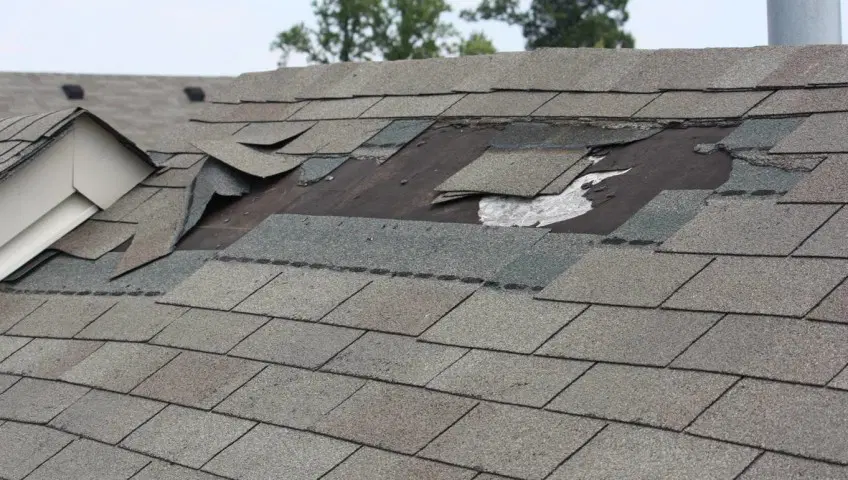- 11427 Reed Hartman Hwy Cincinnati, OH, US 45241

As a homeowner, it is crucial to be aware of potential property damage, especially regarding your roof. Wind and hail are common natural phenomena that can cause significant harm to roofs, leading to costly repairs or even roof replacement. In this article, we will discuss the top signs of wind and hail damage on roofs and provide valuable insights for homeowners to promptly identify and address these issues.
One of the most apparent signs of wind and hail damage on roofs is missing or damaged shingles. High winds can forcefully lift or tear off shingles, exposing your roof to further harm. Additionally, hailstones can cause dents, cracks, or punctures in the shingles, compromising their functionality and durability. Regularly inspecting your roof after severe weather events is essential to promptly identify any missing or damaged shingles.
Another indicator of wind and hail damage is granule loss from the shingles. The granules on shingle surfaces protect against UV rays and harsh weather conditions. When hailstones impact the shingles, they can dislodge or wear away these granules. If you notice excessive granules in your gutters or downspouts, your roof has likely suffered hail damage.
For homeowners with tiled roofs, cracked or broken tiles are signs of wind and hail damage. Strong winds can cause tiles to crack or break, exposing the underlying structure to potential water leaks and further deterioration. Inspecting your roof for any visible cracks or gaps in the tiles is crucial to preventing water intrusion and subsequent damage to your home.
Roofs with metal components, such as flashing, vents, or gutters, are susceptible to dents and bending during hailstorms. Hailstones can dent metal surfaces, compromising their functionality and ability to redirect water away from the roof. Inspect these components carefully after severe weather events to ensure they are in good condition and functioning correctly.
Water leaks or stains inside your home can indicate roof damage caused by wind or hail. After a storm, check your attic or ceiling for any signs of water intrusion, such as damp spots, discoloration, or mold growth. These issues may suggest that your roof has been compromised and requires immediate attention to prevent further water damage to your property.
The flashing around your chimney prevents water from seeping into your home. Strong winds or hail can dislodge or damage the chimney flashing, creating gaps or cracks that allow water to enter. Inspect the flashing regularly and look for signs of damage, such as rust, corrosion, or separation from the chimney structure.
Roof vents, including turbine or ridge vents, can show signs of hail damage in indentations or dents. These vents are crucial in maintaining proper airflow and ventilation within your home. If you notice any deformities on the vents after a hailstorm, it is essential to have them inspected and repaired to ensure optimal performance.
Gutters are designed to channel water away from your roof and foundation. However, high winds and hail can loosen or damage gutters, impeding their functionality. Inspect your gutters for any signs of detachment, bending, or cracks that may have occurred due to severe weather conditions. Promptly addressing gutter issues can help prevent water accumulation and potential structural damage.
Skylights are vulnerable to hail damage due to their exposed position on the roof. Hailstones can cause dents or cracks on the surface of skylights, increasing the risk of water infiltration. Regularly inspect your skylights for any visible damage, and consider installing protective coverings or impact-resistant materials to minimize the potential impact of hailstorms.
In conclusion, wind and hail can cause significant damage to roofs, jeopardizing the structural integrity of your home. Awareness of the top signs of wind and hail damage allows homeowners to take timely action and mitigate potential issues. Regular roof inspections, particularly after severe weather events, are crucial in promptly identifying and addressing any damages. Remember that proactive maintenance and timely repairs can save you from costly roof replacements in the long run. By staying vigilant and addressing roof damage promptly, homeowners can ensure the long-term protection of their property.
Remember, if you suspect wind or hail damage to your roof, it is advisable to consult with a professional roofing contractor to assess the extent of the damage and recommend appropriate repairs or replacements. Your local roofing expert will have the expertise and experience to guide you through the necessary steps to restore your roof’s integrity and safeguard your home.

Open 24 Hours